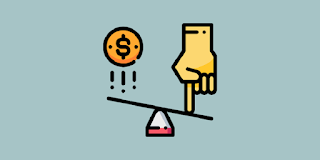How to choose leverage in forex
 |
| How to choose leverage in forex |
To understand forex trading better, you should have a solid understanding of geopolitic events around the world, the major global economics and the effect of volatility on different markets. However, the economic and financial events around the world aren’t the major problem for novice traders. Lack of knowledge about utilizing leverage is the main problem for novice traders, and causes them to loose money.
According to published statistics, novice traders are the ones that suffer from improper use of leverage the most. Using leverage without adequate knowledge is one of the main reasons why traders loose money. In this article we are going to discuss the risk of leverage and teach you how to adjust your leverage properly.
Key points in using leverage in forex
- Leverage is a tool which allows you to borrow money from your broker to be able to carry out larger trades than your total investment
- Most forex traders use leverage to gain significant profit from small movements in the market
- Since leverage is able to increase both potential profit and loss, it is important to adjust your leverage according to your risk management
- Leverage in forex could be 1:50, 1:100 or even more.
Risk of leverage
Leverage is a tool which allows traders to borrow money to carry out larger trades. In forex, brokers usually provide this loan to the clients. While traders are allowed to receive a significant amount of money according to their initial investment, they can reap more profit (according to their initial investment) from their successful trades.
In past, brokers had the ability to offer leverages as high as 1:400. This means that you can manage 100,000 U.S Dollars worth of positions by locking only 250 U.S Dollars. However, financial laws restricted the amount of available leverage offered by brokers to 1:50 (which is still a high amount). This means that the same 250 U.S Dollar investment enables the trader to manage 12,500 U.S Dollars worth of positions.
Now, the question is that should a novice trader start with a leverage as low as 1:5 or as high as 1:50? Before answering this question, we are going to make some examples of how much money you can earn or loose while using leverage.
Example of using the maximum amount of leverage
Imagine trader A has a trading account with 10,000 U.S Dollars balance. He/She then decides to use 1:50 leverage. This means that trader A is able to trade up to 500,000 U.S Dollars. In forex this is equal to 5 standard lots. Three main trading volumes in forex include standard lot (100,000 units of a currency pair), mini lot (10,000 units of a currency pair) and micro lot (1,000 units of a currency pair). Price movements in forex are measured by pip (point in percentage), and each pip of movement in one standard lot equals a 10 unit change.
Assuming that trader A has bought 5 standard lots with U.S Dollars being his/her base currency, the value of each pip will be 50 U.S Dollars. If the position moves 50 pips in the opposite direction, the investor would loose 2,500 U.S Dollars.
50 pips * 50 = 2500
This amount is 25% of the trader’s total investment.
Example of using the minimum amount of leverage
Now let’s discuss trader B. Instead of increasing leverage to its maximum available amount (1:50), let’s choose a more conservative leverage (1:5). If trader B has a trading account with 10,000 U.S Dollars balance, he/she can trade up to 500,000 U.S Dollars. Each mini lot will be 10,000 U.S Dollars. If the position moves one pip in one mini lot, the value of position will change 1 U.S Dollar. Since trader B traded 5 mini lots, therefore, the value of each pip equals 5 U.S Dollars.
If an investor looses 50 pips with the same trading volume, then he/she looses 250 U.S Dollars according to the following formula:
50 pips * 5 = 250
which is only 2.5% of the trader’s total investment.
How to adjust leverage properly
There are several rules that investors should follow to determine a suitable leverage. Three simple rules are presented below to help you adjust your trading leverage properly:
- Try to keep your leverage low
- Try to use trailing stop loss to protect your investment
- Do not risk more than 1% to 2% of your total investment on each trade
Forex traders should choose a leverage which allows them to have control over their positions. If you are a conservative trader and don’t have a high risk appetite or you have just started trading forex, choose a leverage between 1:5 to 1:10.
Using stop loss is an effective way to limit losses and cut the looses in case the position moves in the opposite direction. By using stop loss, investors can make sure to be able to learn trading forex and limit their losses in case of having an unsuccessful trade. Using stop loss is important, because it prevents you to make emotional decisions.
Bottom line
Choosing leverage depends on the level of experience, risk appetite and working knowledge of trading forex. Novice traders should spend the majority of their time on learning forex terms and phrases and stay as careful as possible while learning. Using trailing stop loss, keeping positions small and limiting risk for every individual trade is a good start for learning how to manage levered positions.
Aron Groups Broker allows its clients to choose from a wide spectrum of leverages, starting from 1:2 to 1:1000. Both novice and experienced traders, with different strategies and risk appetites could benefit from Aron Groups services.
Written by: Mohsen Mohseni (Aron Groups).


.png)
.png)



